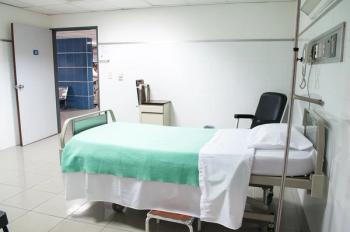
- Contagion, April 2021 (Vol. 06, No. 02)
- Volume 06
- Issue 02
Is There a Better β-Lactam for Viridans Group Streptococci?
Highlighted study: Wo S, Dubrovskaya Y, Siegfried J, Papadopoulos J, Jen SP. Clinical outcomes of ceftriaxone vs penicillin G for complicated viridans group streptococci bacteremia. Open Forum Infect Dis. 2021;8(1):ofaa542. doi:10.1093/ofid/ofaa542
Viridans group streptococci (VGS) comprises streptococci that are normal human colonizers. Rarely do these organisms cause infections in immunocompetent individuals, although they can be pathogenic in the right patient host. A recent article called VGS the leftover “grab bag” of organisms when β-hemolytic streptococci, enterococci, and pneumococci are excluded from streptococci.1 The 6 major groups of VGS are Streptococcus mutans, S salivarius, S anginosus, S mitis, S sanguinis, and S bovis. Antimicrobial resistance can vary among VGS, with the S mitis group harboring the highest resistance rates.
β-lactams remain therapies of choice for VGS infections, although there are limited data supporting 1 therapy over another. Penicillin G (PCN G), ampicillin (AMP), and ceftriaxone (CRO) are frequently used in clinical practice. Wo et al attempted to differentiate clinical outcomes using CRO compared with PCN G (in which they also included AMP). This single-center, retrospective study included patients if they grew VGS from at least 1 blood culture, had documentation of bacteremia in the medical record, and received at least 4 weeks of therapy aimed at VGS. Patients who received an antibiotic for at least 50% of the duration of therapy were included in that therapeutic arm.
The primary composite end point was a composite outcome of hospital readmission due to VGS bacteremia or therapy adverse event (AE), Clostridioides difficile, treatment modification or discontinuation due to an AE, or development of extended-spectrum β-lactamase (ESBL) resistance. It is important to note that clinical cure was not outright evaluated, just safety end points.
Ninety-four patients were included: 64 in the CRO group and 30 in the PCN G group (26 PCN G, 4 AMP). Patients were mostly White and male with median ages of 69 (CRO) and 64 (PCN G) years. Patients in both groups were similar in terms of concomitant medical conditions and admission to intensive care units. Unsurprisingly, more patients (21.9%) in the CRO group had a history of a β-lactam allergy compared with the PCN G group (0%). S mitis was the most common organism, followed by S anginosus. Whereas endocarditis was the most common source of bacteremia, there were more patients in the PCN G group with an unidentified source (16% vs. 3.1%). Additionally, more patients in the PCN G arm were not able to achieve source control. There were no differences in infectious diseases consult, time to documented clearance of blood cultures, or duration of therapy. More patients in the PCN G arm received concomitant therapy with gentamicin.
There was no difference in the primary end point: 14.1% of CRO versus 26.7% of PCN G group. Hospital readmission due to bacteremia or therapy was the leading cause of composite end point, occurring in 10.9% of CRO and 20% of PCN G patients. There were no differences among the other parts of the composite end points: emergence of ESBL, C difficile infection, or therapeutic modification. In a multivariate analysis, source control was found to be protective (odds ratio [OR], 0.116; 95% CI, 0.020-0.6771), and receipt of gentamicin was found to be predictive of composite end point (OR, 6.553; 95% CI, 0.893-48.106).
As this was a retrospective, single center study with limited patient numbers, there are noticeable limitations. However, it is the largest safety study comparing β-lactam therapies for this indication. Emergence of resistance or C difficile may not have allowed for enough follow-up time or for it to be adequately powered. Still, there are a number of benefits demonstrated by this study’s results.
An overarching tenet of antimicrobial stewardship is selecting the most-targeted, narrow therapy based on the organism isolated.2 In the case of VGS, this includes PCN G or AMP. However, each of those medications requires frequent dosing intervals. This can be labor intensive for the patient and their caregiver(s) once they are discharged on outpatient parenteral antimicrobial therapy. Conversely, CRO, as a third-generation cephalosporin, has a broader spectrum of activity and may be associated with additional AEs, such as development of C difficile or ESBL.
The tradeoff, however, is that it is only dosed once per day and is much easier to administer outside the inpatient setting. Cost can also be a factor. All 3 antibiotics are available as generic products. However, due to complicated insurance coverage and manufacturing for the others, CRO may be the most cost-effective option. PCN G, and more recently AMP, can be given as continuous infusion, but to do so requires more-sophisticated infusion devices, which may also incur a higher cost to the patient.
An infectious diseases physician at my institution, Beth Israel Deaconess Medical Center, is known for saying that the most expensive antibiotic is the one that does not work. An extension of that would also be one that the patient does not take. Wo and colleagues provided additional information that CRO, PCN G, and AMP appear to have similar safety composite end points in the treatment of VGS bacteremia. Therefore, when discharging patients, the choice of therapy can be based on which administration technique best suits the patient’s lifestyle and financial constraints.
References
- Doern CD, Carey-Ann BD. It’s not easy being green: the viridans group streptococci, with a focus on pediatric clinical manifestations. J Clin Microbiol. 2010;48(11):3829-3835. doi:10.1128/JCM.01563-10
- Barlam TF, Cosgrove SE, Abbo LM, et al. Implementing an antibiotic stewardship program: guidelines by the Infectious Diseases Society of America and the Society for Healthcare Epidemiology of America. Clin Infect Dis. 2016;62(10):e51-e77. doi:10.1093/cid/ciw118
Articles in this issue
over 4 years ago
Advances in the Management of C difficileover 4 years ago
NAFLD Is Increasingly Affecting Patients With HIVover 4 years ago
BNT162b2: The First COVID-19 Vaccineover 4 years ago
Let’s Say It Out Loud: Being Vaccinated Has Benefitsover 4 years ago
Virus Spillover and Emerging Pathogens Pick Up SpeedNewsletter
Stay ahead of emerging infectious disease threats with expert insights and breaking research. Subscribe now to get updates delivered straight to your inbox.


























































































































































































































































































